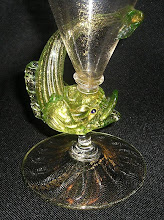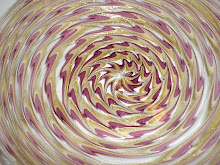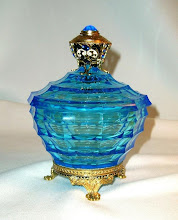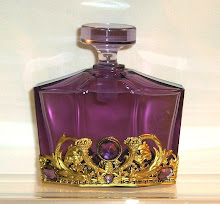The above engraving is from The Illustrated London News, March 30, 1850, page 217. Following is the brief description of this glass in the article: "The groupe (sic) of Venetian glass below [above on our page] has been formed from specimens contributed by the Duke of Buccleugh, Mr. Farrer, and Mr. Slade. We observed in our former notice of this Exhibition how famous Venice had become in the middle of the fifteenth century for its manufacture of ornamental glass, and more appropriate of the different processes in vogue could scarcely have been selected by our artists, either for beauty of form or design. [click on photo to enlarge]



















































